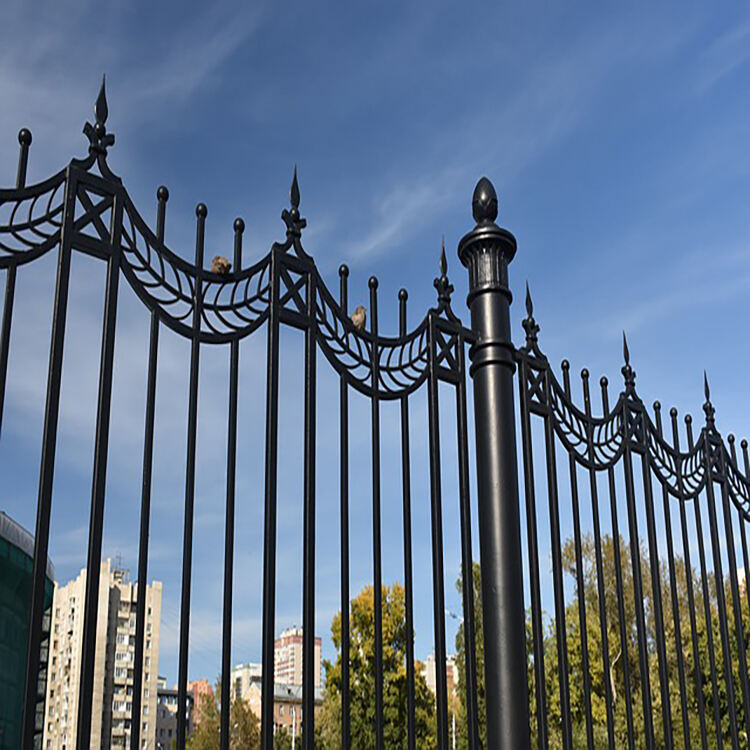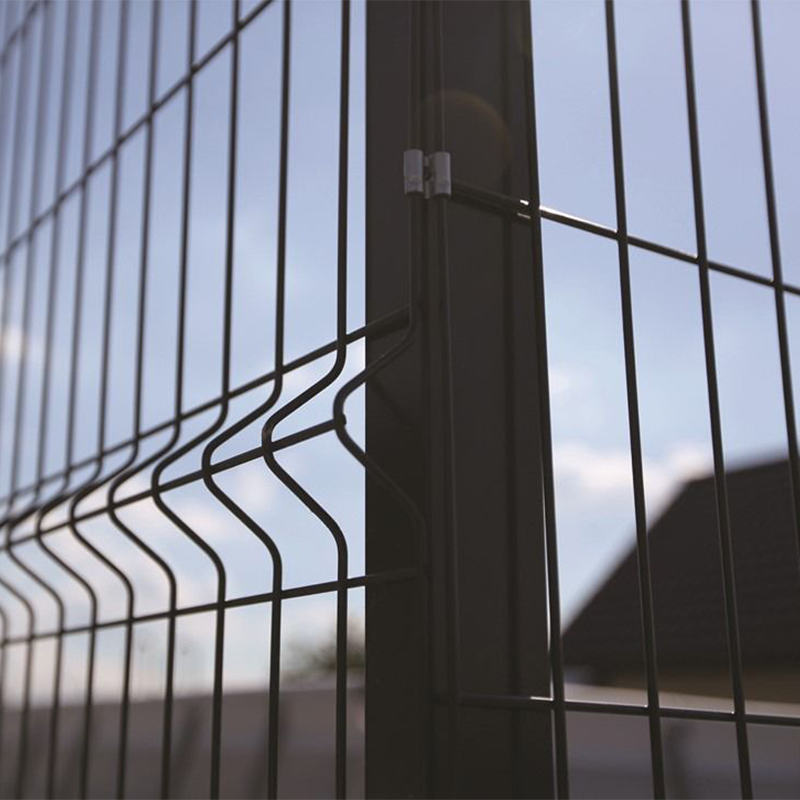Essential Preparations for DIY Fence Installation
Check Local Regulations and Zoning Laws
Before attempting to install your own fence, you will need to do some thorough research on local fences regulations. These constraints might govern everything from limits of height and material to stipulations of setback. You can contact the zoning office or planning department in your area to obtain more specific information. There's also the issue of your homeowners' association (HOA), if you have one, because they might have their own regulations dictating what kinds of fences are allowed (they're known to restrict the color too). Receiving this sort of information up front is going to keep you not only out of fines but it is going to guarantee that your fence enhances the value of your property.
Mark Property Boundaries Accurately
It's essential to have your property lines accurately marked to avoid conflicts with your neighbors while installing a fence. If there’s any question about your property lines, you may want to consider hiring a professional land surveyor. With clear borders firmly in place, you are able to set stakes and run twine to show just where your fence will be, keeping you in accordance with local regulations. The right boundaries not only help with your work but also prevent trespassing problems tomorrow, and protect both you and your neighbor from future strife.
Compare Fence Styles: Chain Link vs. Wood vs. Vinyl
When it comes to chain link vs. wood and vinyl fences, you have to do your homework and consider the different advantages and disadvantages of each. Chain link fences are cost-effective and high-quality, but wood and vinyl materials can provide aesthetic value and privacy. Wood fences have a classic look and may be customized but need more maintenance. Vinyl fences, on the other hand, require little maintenance, are incredibly durable and weather-resistant and require an upfront cost. By assessing the value and characteristics of these types of materials you can decide which style will work best for you and your budget based on durability, maintenance, cost, and function (security, privacy, or decorative).
Choosing Materials for Long-Lasting Results
Steel Fence Panels vs. Galvanized Fence Panels
When we talk about being able to build long lasting and strong fences, the decision whether to use steel or galvanized fence all boils down to your decision. Steel fencing panels are among the most popular of steel fence types and are very strong and durable, typically used for industrial fencing and certain heavy-duty applications. It is a buttom-machine maintenance where you sometimes need to wash, dry and properly coat it in order to prevent rust. In contrast, galvanized fence panels are steel panels that have been given a zinc alloy coating to improve their corrosion resistance and durability. This assistance against the corrosion including the moisture and rust makes these screws better suited to outdoor use. There is also the fact that, albeit more expensive at first sight, galvanized panels are long lasting and require little maintenance, resulting in lesser expenses in the long run, which means galvanized panels are a wise choice for plenty of property owner.
Temporary Fence Options for Short-Term Needs
Temporary fencing solutions are perfect regardless of the application, for short term or long term use. These barriers are often seen at special events, construction sites, or areas in need of temporary traffic control. There were also lightweight and portable Hopefully good for on the go. Temporary barriers are often composed of portable steel or plastic panels that are lightweight and can be assembled and disassembled quickly. Mesh choices allow visibility but communicate a shift in space effectively. But before you install a temporary fence, you’ll need to check with your local governing bodies, as some municipalities may require a permit. Compliance not only averts any potential fines, but leads to safety and proper functionality of the temporary structure.
Calculating Material Quantities and Costs
Part of the planning for a fence installation involves knowing how much material you will need and how much it is going to cost. Begin by measuring length and height of the project to determine how many panels you will need. For accurate measurements, employ equations, such as multiplying the entire length by the amount of units (e.g., panels/posts per unit length). The estimate should include cost of materials, labor, and incidentals, such as tools or unplanned repairs. Having a budget spreadsheet is a good idea, because it can be used to see estimated and actual expenses and if any of them were unexpected. The proactive financial management ensures that the money and hours in the project are spent effectively and delivers a headache free solution ensuring the project remains within budget and avoiding delays.
Step-by-Step Fence Installation Process
Digging Post Holes and Setting Foundations
Digging post holes is one of the most frustrating parts of fence installation and you can find holes that are both too deep and two shallow at any DIY level. For most fences, you’ll need a post hole digger to dig holes that are at least a third as tall as your posts to provide adequate depth for stability. Foundations should be set in a material such as concrete or gravel to secure the posts properly. With concrete, you will get a support system that is not only strong and supportive, but also extremely durable and long-lasting. Safety first of course, especially when it comes to handling digging equipment. Unfavourable conditions, like hitting a utility line, requires careful planning and adherence to safety requirements.
Installing Chain Link Fence: Tensioning and Clips
Fitting a Chain Link Fence Each of the following need tensioning and clipping for maximum security and durability. It's important to tensed it well so that the fence won't sag and won't harm your body. Usually, the chain link fence is stretched across posts and fastened with clips to keep it taut. Finding the right balance is not only prettier, it prevents structure problems. Addressing typical installation problems like misaligned or loose posts can help maintain the life and strength of your fence. If it gets out of align, you will be able to adjust the tension of the clips and secure to fix them, keeping the net neat and secure.
Attaching Panels and Securing Gates
To guarantee stability and security for your fence, a visual guide for panels and gates can be provided. First, make sure to securely attach the panels to the posts ensuring they are all plumb. Some locking hardware is necessary to install gates in order to increase the security and accessibility level of them. 2 Lock type The selection of lock is based on the required security level and use purpose. Know of the potential safety hazards from inadequately installed components, and correct them as necessary. If any of the latching or hinging is loose, those all can be monitored on a regular basis to avoid injury or unlawful access.
Cost Considerations and Budgeting
How Much Does Chain Link Fence Cost?
Determining chain link fence cost can be challenging because there are numerous factors that go into it. The overall cost may include supplies, labor, and recurring maintenance. The price for material tends to fluctuate depending on various criteria such as actual fence height, type of wood and or other material, and fence style; for example, a 6” high spruce wood fence may be between $5 per linear foot and $20 per linear foot. (and supply, truck and labor costs can add another $25 to $50 per hour, depending on location and complexity). The average cost of professional chain link fence installation ranges from $1,500 to $3,000 for 150 linear feet, as reported by industry experts Some extra costs may be incurred, including tearing out old fences or doing some landscape work required to accommodate the site.
These considerations emphasize the importance of thorough planning and budgeting when installing a chain link fence to avoid unexpected expenditures.
Saving Money with DIY vs. Professional Installation
If you are considering whether to install a chain link fence yourself or would like to know how much it would cost to have a professional properly install it, you need to take the time to review the best chain link fence for the cost to see if it's really the best deal in the long run. The cost savings of DIY installation can be stifled by the need to either rent or buy specialized tools, though this can depend on the installation method you choose. For people who do not have as much time, or knowledge, to dedicate to the process, hiring a professional might save them money in the end. Professionals can be efficient, limiting the potential for waste along with costly mistakes. Instances in which an expert should be considered, is where your site is unique and too complicated to handle for many do it yourselfer’s or if you need the blind to be installed fast. In the meantime, if you choose a DIY route, you may want to rent instead of buy equipment, and get materials from local suppliers to save money. These approaches allow you to maximize your budget while preserving quality.
Timing and Legal Compliance
Best Seasons for Fence Installation
When installing a fence, the time of year that install occurs is important for both weather and stability of the ground. The best times of the year for installing fence is usually spring into early summer. The best weather conditions guarantee the ease of installation and the best performance of the material. If you are able to schedule fence installation in the chillier seasons, such as Winter, then issues with frozen soil and long lead times won’t be an issue. You can also expect the price of materials to go down and labor costs to increase when it's high-demand time of the season (for example, in the Summer).
Understanding Permit Requirements
Knowledge of specific permit requirements is key to fence installation projects in different areas. Usually permits are required in order to regulate that construction conforms to local safety requirements and does not violate zoning regulations. You should consult with your local officials on regulations and permit requirements before installation. A sure way to making its way through the permit process faster is by preparing relevant documents in advance, including site plans and property surveys. If the proper permits are not obtained, you could face penalties, fines and your fence being forced to be removed. Just make sure you act in good faith to stay away from these costly penalties.



